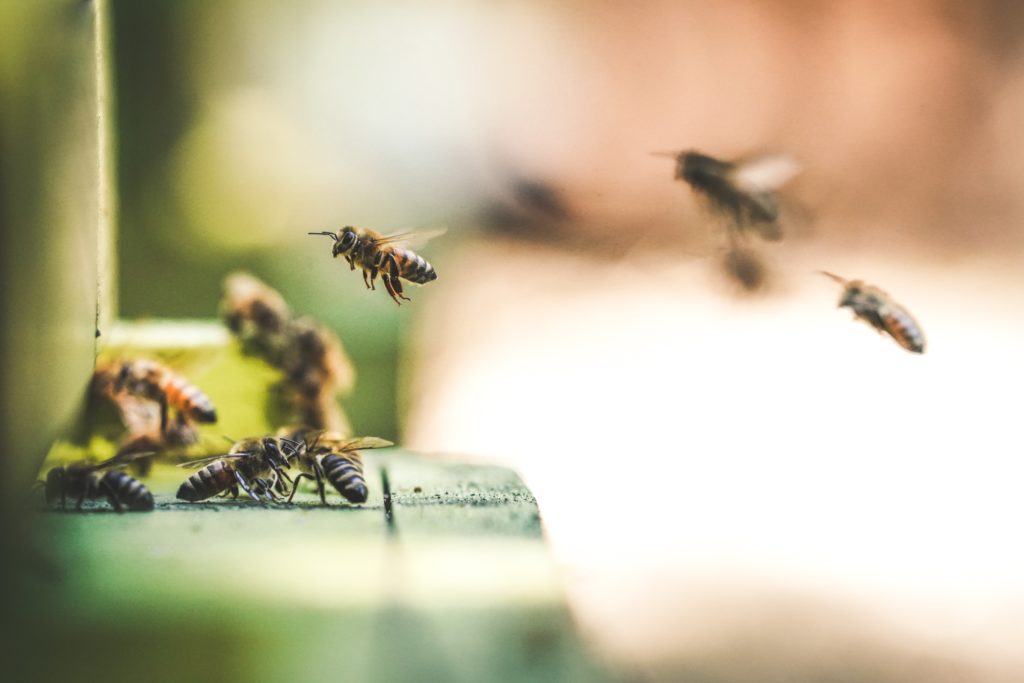Many people may not realize that honey bees are responsible for more than just honey and beeswax production. Honey bees are responsible for much of the food we see on our dinner plates every day. According to the FDA, more that 90 crops in the U.S. relies on bee pollination. These amazing insects pollinate about one-third of the food Americans eat. This World Honey Bee Day, let’s take a moment to learn a few things about these insects on which we rely.
There are many different kinds of honey bees in the hive.
Worker bees make up the majority of bees that are in the hive. These bees are sexually undeveloped females that work to build, maintain and protect the bee colony as well as raise the young bees. Worker bees also forage for food, which is the pollen and nectar from flowers, keep the hive clean, and circulate the air by beating their wings. The lifespan of a worker bee is only about 6 weeks in the busy summer, but can live for four to nine months during the winter.
The queen bee‘s job is to lay eggs to spawn the next generations of bees for the hive. Usually, there is only one queen in the hive. The queen usually only mates once in her life, and will live for several years. When she dies or her productivity declines, the worker bees create a new queen by feeding one of the female larvae a diet of exclusively “royal jelly.” Royal jelly helps the bee to develop into a fertile queen, distinguishing her from the other female workers in the hive.
Drones are the male bees of the hive. These bees are on standby in the case that the queen dies and they need to mate with the new queen in order for her to lay eggs and produce more bees for the hive.
Honey bees produce six hive products.
Honey, pollen, royal jelly, beeswax, propolis, and venom. The products produced by bees are all collected and used by people for various nutritional and medicinal purposes.
Honey is the most well-known product produced by bees as well as the most economically important. According to the U.S. Department of Agriculture’s National Agriculture Statistics Service, in 2016, honey bees in the U.S. produced around 163 million pounds of honey. With honey costing about $2.08 per pond, that’s a value of about $339 million.
Beeswax is the second most important hive product the bees produce. Beeswax used to be used as a unit of trade for taxes and other purposes in Medieval Europe, and even dates as a unit of trade to ancient Greece and Rome. Now, beeswax is popular for making candles and as an ingredient in leather and wood polishes. It is even used as a binding agent, time-release mechanism, and drug carrier in the pharmaceutical industry.

Take a moment today to appreciate these tiny-sized, producers.
